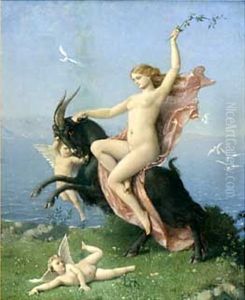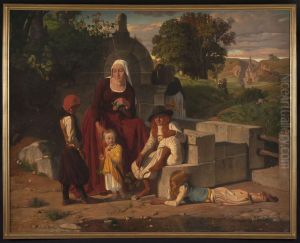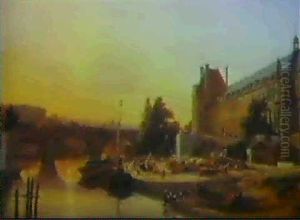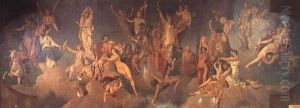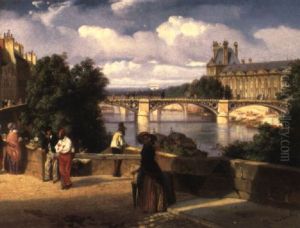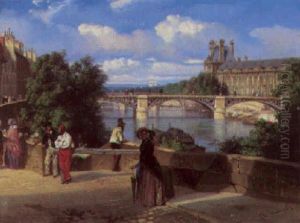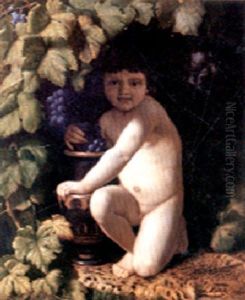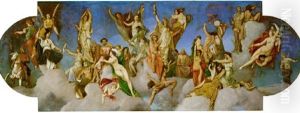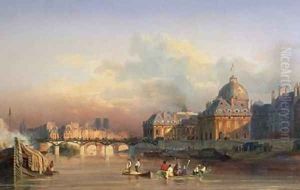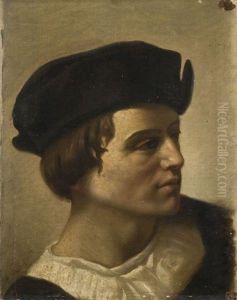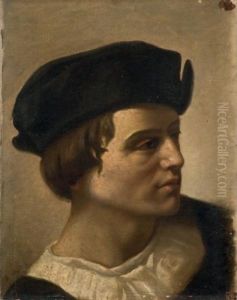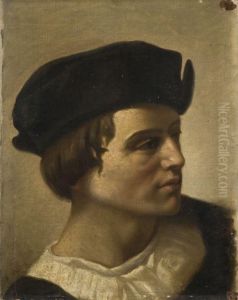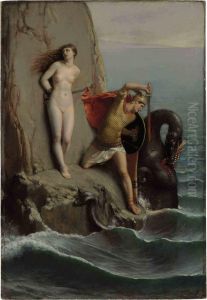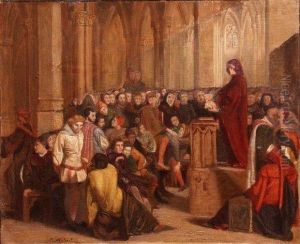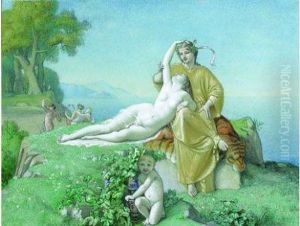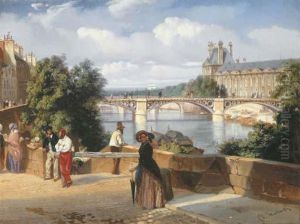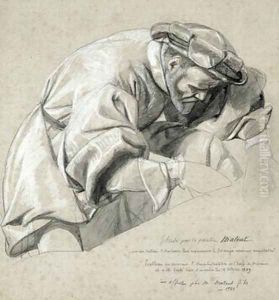Louis Nicolas Matout Paintings
Louis Nicolas Matout was a French artist born on April 28, 1811, in Serquigny, Normandy. He is recognized for his contributions as a painter, decorator, and illustrator, particularly in the realm of religious art during the 19th century. Matout studied under the guidance of esteemed artists such as François-Édouard Picot and Léon Cogniet, which allowed him to develop a strong foundation in the classical art traditions of the time.
Matout's work was largely influenced by the historical and religious contexts of his era. He was a contemporary to the Nazarene movement, which sought to revive the spirituality and purity of medieval and early Renaissance art. Although not directly associated with this group, his work similarly emphasized religious themes and often reflected the Nazarene commitment to pious subject matter and stylistic references to early Christian and medieval art.
In the mid-19th century, Matout began receiving commissions for church decorations and murals, which became a significant part of his oeuvre. He painted frescoes in various churches in France, including the Church of Saint-Roch in Paris and the Saint-Germain l'Auxerrois. His work for the Saint-Germain l'Auxerrois was particularly noted for its grandeur and the harmonious integration of his frescoes with the church's gothic architecture.
Apart from his ecclesiastical art, Matout also contributed illustrations for literary works, which were popular during his time. These works further demonstrate his versatility and his ability to adapt his style to different mediums and subjects beyond religious art.
Despite his accomplishments, Louis Nicolas Matout is not as widely remembered as some of his contemporaries. Nonetheless, he left a lasting impact on the field of religious art in France. He passed away on August 4, 1888, in Paris, leaving behind a legacy of work that continues to be appreciated for its devotion and artistry in the context of 19th-century French art.
